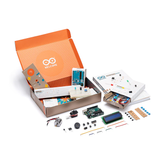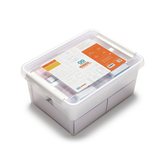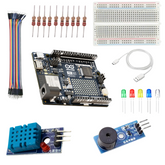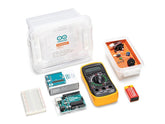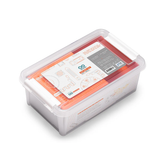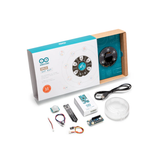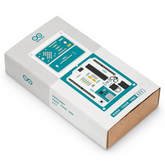Raspberry Pi 500 and Raspberry Pi Monitor Now Available
Summary
Raspberry Pi has expanded its desktop ecosystem with two new offerings designed to streamline deployments and reduce total cost of ownership: the Raspberry Pi 500 personal computer and the Raspberry Pi Monitor.
Together, they deliver an all-in-one hardware solution that simplifies procurement, minimizes cabling and accelerates time to operational readiness.
These additions build on the platform’s reputation for affordability and flexibility, making them ideal for integration into corporate workstations, digital signage, training labs and industrial monitoring stations.
Raspberry Pi 500: High-Performance Computing in a Keyboard

The Raspberry Pi 500 is a clever fusion of performance and convenience, combining the power of the Raspberry Pi 5 with a compact keyboard design to create a ready-to-use personal computer.
At its core, it features a 2.4 GHz quad-core 64-bit Arm Cortex-A76 CPU with cryptography extensions, making it capable of handling complex processing tasks with ease.
Paired with 8 GB of LPDDR4X-4267 SDRAM, it delivers smooth multitasking and is well-suited for data-heavy applications. The integrated VideoCore VII GPU supports OpenGL ES 3.1 and Vulkan 1.3, offering impressive graphics performance for compute-intensive workloads and visuals.
For display, the device includes dual 4Kp60 micro HDMI ports, allowing users to set up multi-display environments, which is especially useful in places like control rooms or trading desks.
On the connectivity front, the Raspberry Pi 500 is well-equipped with Gigabit Ethernet, dual-band 802.11ac Wi-Fi, and Bluetooth 5.0, ensuring stable and fast network access as well as peripheral connectivity.
It also offers two USB 3.0 ports and one USB 2.0 port for attaching high-speed storage, cameras, or other accessories.
A horizontal 40-pin GPIO header is still available, allowing developers and hobbyists to continue with hardware prototyping and expansions. It comes with a 32 GB Class A2 microSD card preloaded with the latest Raspberry Pi OS ‘Bookworm,’ making it ready to boot out of the box.
The all-in-one design helps reduce desk clutter and simplifies cable management, which is a major benefit for organizations looking to deploy large numbers of workstations efficiently.
Raspberry Pi Monitor: Tailored Display for Pi Systems

The 15.6-inch Raspberry Pi monitor is designed with flexibility and ease of installation in mind. It includes a fold-away stand and VESA 100×100 mounting points, making it suitable for a wide range of setups—from kiosks and wall-mounted dashboards to traditional desktop configurations.
This versatility allows users to adapt the Raspberry Pi monitor 1920x1080 IPS to their specific workspace needs without compromising on stability or aesthetics.
One of the standout features is its USB-C power input, which can draw power directly from the Raspberry Pi 500 using a USB-A to USB-C cable.
For full brightness and audio performance, a dedicated 5 V/3 A USB-C power supply can be used. By allowing the monitor to be powered through the Pi itself, users can significantly cut down on power cables, making it ideal for neat, compact installations in racks or on counters.
The slim bezel and low-profile design also make it a sleek, professional-looking addition to customer-facing setups or collaborative environments.
Streamlined Deployment with the Desktop Kit
For organizations seeking a single-purchase solution, Raspberry Pi offers a Desktop Kit that bundles the Pi 500 with essential accessories at a packaged price point:
- An ergonomic Raspberry Pi Mouse for immediate navigation
- A certified 27 W USB-C power supply to drive both the computer and display at optimal performance
- The Raspberry Pi Beginner’s Guide, 5th Edition, which serves as a quick-start manual for IT staff and end users
This turnkey approach simplifies procurement logistics, reduces bill-of-materials complexity and ensures that each deployment has the compatible peripherals needed to function out of the box. For educational institutions and training providers, the inclusion of a step-by-step guide accelerates onboarding, helping non-technical users become productive more quickly.
Advantages
Deploying the Raspberry Pi 500 and Raspberry Pi Monitor can substantially reduce capital and operational expenditures:
- Lower energy consumption: Raspberry Pi devices typically draw under 10 W, slashing electricity costs compared with standard desktop PCs.
- Compact logistics: Smaller packaging and integrated form factors decrease shipping volume and storage requirements.
- Long production lifetime: The Raspberry Pi 500 is guaranteed to remain in production until at least January 2034, ensuring stability in supply chains and simplifying long-term planning.
Both products have undergone rigorous compliance testing against regional and international standards, including CE, FCC and UKCA, facilitating rapid certifications in regulated industries. Detailed conformity documents and certificates are publicly available for audit and due-diligence processes.
Applications Across Industries
The monitor can be used in multiple scenarios, such as:
Digital Signage & Retail Displays: High-resolution output and embedded speakers enable dynamic content delivery in storefronts, visitor centres and public information kiosks.
Industrial HMI Panels: Rugged operation within 0 °C to +50 °C temperature ranges makes these devices suitable for factory floors and control cabinets.
Remote Monitoring Stations: Ethernet and wireless connectivity, combined with low power draw, support deployment in remote sensor hubs, environmental monitoring networks and smart-city installations.
Computer Labs & Training Facilities: Compact footprints and simplified cabling allow institutions to equip classrooms and workshops with modern, maintainable workstations without sacrificing performance.
Office Desktops & Thin Clients: Cost-effective replacement for traditional x86 PCs in scenarios where browser-based applications and cloud-hosted services are prevalent, while retaining local processing capabilities when needed.
Each scenario benefits from the platform’s extensive community support, official software repositories and the predictable lifecycle that comes with Raspberry Pi OS and Compute Module lines.
Conclusion
The Raspberry Pi 500 and Raspberry Pi Monitor represent a significant step forward in integrating compact, cost-efficient computing into enterprise and industrial environments.
By combining processing power, versatile connectivity and simplified setup in a single package, they deliver predictable performance, reduced operational overhead and long-term supply assurance.
Whether powering digital signage networks, industrial control panels or educational labs, this turnkey solution leverages the strengths of the Raspberry Pi ecosystem to meet the demands of modern organizations while maintaining budgetary discipline and sustainability goals.



